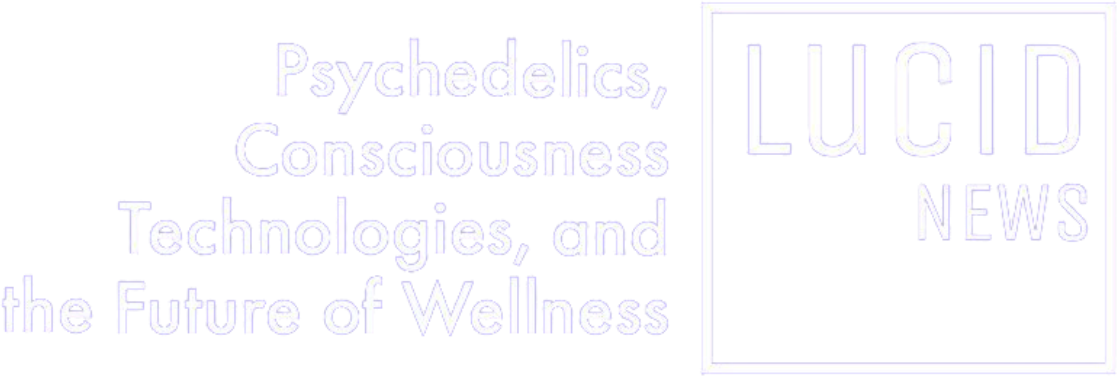The Therapeutic Potential of Psychedelics and Nature Explored in New Review

Psychedelics are known for fostering a connection to nature (some even say they communicate messages from nature). At the same time, nature immersion therapy has been recognized for its many health benefits. However, little research has explored whether these two practices could benefit from being combined.
Sam Gandy, Ecologist with Sanctus Limited and an external collaborator with the Center for Psychedelic Research Imperial College London, and Rosalind Watts, Clinical Director of Synthesis Institute, recently completed a review of the scientific literature exploring the possible synergistic effects of these two healing modalities.
In the review published in Health Psychology Open, Gandy and Watts outline the overlapping benefits of psychedelic and nature immersion therapy, and propose ways to safely bring nature elements and practices into clinical psychedelic research. In the process, they explore why nature contact is so important to human wellbeing and possibly to our continued existence on the planet.
Lucid News spoke with Gandy and Watts about the review and its implications for future research in psychedelic therapy.
What drew you to study the connection between psychedelics and nature?
SG: I personally feel we could be doing more to use psychedelics as tools that can form a meaningful connection between people and nature. We know that natural environments are good for our mental health and well being. We also know from research that psychedelics can change people’s relationship to nature in a positive, enduring way. There could be a beneficial synergy there: mental health benefits and the potential for fostering pro environmental behavior.
RW: I hadn’t really realized before we did this review that the mechanisms of psychedelic therapy and the mechanisms of nature therapy work in a similar way. Also, when you talk to people that are experienced with using psychedelics, they will often choose to do them in nature, and they will say that their nature habits began when they had their first psychedelic experience. They saw nature as a living thing and felt connected to it in a personal way. That story is so prevalent, so important, yet you don’t see it referred to in the scientific research.
Your report suggests that psychedelics deepen “nature connectedness.” What is that?
SG: Nature connectedness is one’s self-identification with nature, the sustained awareness of the interrelatedness of yourself with the natural world. It’s quite specific and not the same as just going out into nature, which itself is also beneficial.
Why do you think nature connection is discussed so little in the research?
RW: Nature still has that slightly touchy-feely, wooly-geography-teacher-in-corduroy-trousers, “not proper science” thing about it. I’d say in terms of psychotherapy, it’s still very niche, which is crazy because of the situation that we’re in. We’re literally going to become extinct if we keep neglecting it. Psychedelic science is replicating that same pattern by keeping it out, keeping it fringe. It’s time to bring it in.
SG: That’s a good point. It is symptomatic of our disconnection, that nature is considered a niche thing. Some people can experience nature connectedness as spiritual or transpersonal. But it’s also a central tenet of the science of ecology, that we are interconnected with all life on earth. That is the main event that’s happening. Yes, we have these individual experiences of being separate, but that separation is essentially a sophisticated and amazing trick by the brain. We are of course interconnected.
As your survey points out, psychedelics can help heal that sense of disconnection. Why do you think they are so effective at connecting us to the natural world?
SG: There are a few things going on here. I think a big part of the story is their ability to induce ego dissolution. When our egos dissolve, our egos being our subjective sense of self identity, perceived boundaries between self and other or nature become very blurry. I think that can facilitate this expanded self-nature overlap. It’s an important part of the story when it comes to psychedelics. The capacity of a psychedelic, like psilocybin, to increase feelings of nature connectedness, even when administered in clinical settings, isn’t something that applies to any of the other nature connectedness interventions. They all depend on active engagement with nature, in some way. What could be happening is that the psychedelic is bringing internal processes of life, biology, and the brain into focus. We are nature of course, so when you’re connected to that, you’re sort of tuning into your own inner nature, perhaps.
RW: Yeah. And I think the increased sensory perception and the ability to really observe, be present, and see – for example, colors are so much brighter- I think that kind of clarity of vision allows for real appreciation of the beauty of nature. Something quite simple can suddenly become incredibly beautiful and intricate. You know, people can stare at a flower for hours.
SG: That’s another part of the story, as well. The aesthetic appreciation of nature is a pathway to greater nature connectedness.
How might nature and natural settings be added to the clinical psychedelic therapy model?
RW: There’s so much opportunity for creativity. At the end of the paper, we wrote a little bit about how we might do it. You might have an indoor-outdoor clinic setting, or you might use nature for integration and preparation. In the actual psilocybin retreat itself, there’s lots of different ways. Sam introduced me to shinrin-yoku or forest bathing. It’s basically tree hugging, really immersing yourself in the life of the forest. Sam and I did an integration weekend with people taking part in an Imperial College psilocybin depression study and they loved it.
SG: People could also start indoors, in a more clinical setting, then with progressive sessions, once they’ve got more experience with the psychedelic mind state, have the option of doing more nature immersion. Ros also mentioned in the paper some ideas about horticultural therapy practices, like tending the ground and the soil before you have a session, then planting a seed that you take away with you and look after as you’re hopefully integrating and nourishing the insights from that experience at the same time. It’s a living metaphor.
Also, Ros and I had a great chat with the Usona team a few months ago, and I was really bowled over by the scale of their vision and ambition in terms of incorporating nature into their model. They’re building a center in rural Wisconsin and have hired an architect to incorporate biophilic design into the structure along with sheltered gardens. So yeah, there are big players that are aware of all this and will be bringing it into the psychedelic treatment model. It’s really good to see.
There does seem to be a rift occurring between Western clinical psychedelic practices and traditional indigenous psychedelic practices that are older and more nature based. Do you see these practices coming together or might the divide grow bigger?
RW: It was a relief to be thinking about this at a time when I was becoming increasingly concerned about the mainstreaming of psychedelics, how that pathway will take psychedelic medicines and turn them into a cheap mass market product. Then realizing, parallel to that pathway that’s already happening, there’s another pathway: people who want to do this as it’s been done for thousands of years, in groups in nature. It’s like KFC versus the farmers market. We will probably have many models – places where you can do it in a clinical, brief way, and then places that are much more expansive and based on indigenous wisdom.
SG: I see the clinical model going in a certain direction that’s firmly established. And we’re not trying to attack that. It keeps the environment controlled, it keeps people safe, and it works – there’s good scientific evidence to show that. I think there’s room for other models and approaches, though. We can expand on the best bits of the clinical model and ground it in nature. I think the clinical model is great as it is, but I also feel that it’s maybe going to put a cap on potential benefits, and we could potentially do better.
RW: There will be places that synthesize the two models for sure. I think the very medical nature of the model, especially as it becomes mainstream and large scale, is an invitation to develop other ways, because people need different ways. And I think the other element of using a more nature based approach is that it addresses one of the key problems with psychedelic mainstreaming, which is psychedelic capitalism: the big pharma companies and for-profit companies making psilocybin. These ancient healing medicines then become a product to make huge profits for a tiny number of wealthy shareholders. And nothing’s coming back to the communities that developed those wisdoms, actual land based, geographically bound communities. The money is kind of being siphoned off and going to the shareholders of a few big companies. It’s that structure that is the root of so much mental suffering, and we need to change that model. Have you seen the Pollinator model from Bennet Zellner?
Please tell us about it.
RW: Zellner is an economist and he’s developed a model of how psilocybin would be disseminated at scale to the people who need it. But rather than it being by a few shareholders of a big pharma company, it would be by the people for the people, through community based centers. In the pollinator model, you have clinics in land-based communities, serving a particular community. The people who work at the clinics are from the community. When people have had a psychedelic experience, a big opening, they are then linked into community services in that area. They might start volunteering, doing river cleaning, working forests, planting trees, or other kinds of connectedness processes. And it’s very much based in that land, in that community. So I see different models, and a nature focus allows for this more communal, connected, way of doing it.
It sounds like nature-based therapy leads to the idea of reciprocity.
RW: I like that way of putting it.
SG: Reciprocity is a part of nature connectedness, actually. As one becomes more connected to nature, and you can see this with various indigenous groups around the world, you tend to view the environment as an extension of yourself. Why would you harm the environment? You’d be harming yourself. As that connection increases, so does this intuitive, protective feeling of stewardship. As amazingly successful and beneficial as our civilization has been, one of the most unfortunate consequences of it is that we’ve inadvertently, through our growing urbanization and technology, severed that deep connection to nature. As a result, we’ve also severed our intuitive feelings of stewardship and protection towards it.
It’s exciting to think that psychedelic therapy could foster pro environmental behavior. Do you see a link between our psychological states and our treatment of the planet?
SG: The roots of the environmental crisis are largely psychological. Something intangible, like psychology, is leading to this disconnect from nature, and that in turn is leading to ecological damage and destruction. So we need tools to help push against that. There are very few interventions that can robustly and in an enduring way increase nature connectedness in an enduring way. While the research on psychedelics is still in its early days, I think we know enough to say that one or two experiences with a psychedelic like psilocybin can increase nature connectedness, and can do it blindly, without the prior intention of doing so. That itself is an interesting point because a lot of the interventions that exist for nature connectedness are specifically focused on increasing it. So I think we have this huge untapped potential here to use psychedelics purposely, as agents of nature connection.
The synergistic effect between psychedelics and nature immersion could also slow this negative feedback loop — the mental health crisis leading to nature disconnect, leading to ecological damage, leading to a mental health crisis.
SG: It’s about human flourishing and human thriving. To quote Bob Jesse, “It’s about the betterment of well people.” As well as the potential for catalyzing environmental awareness.
RW: Especially in times like now, with Covid-19. People are completely divorced from nature, and they can’t get to a green space. It is destroying people’s mental health. We are going to need psychedelic treatment centers or wellness centers in most communities, in the same way that you have your hospital. I hope the Pollinator model will come in. If things unfold the way I hope they will, then the community can come together and say, we desperately need a green space, and they can create that. Obviously there’s lots of challenges in terms of money, who’s funding it, where the land is coming from. But we’ll have to find a way.
Correction: A previous version of this article incorrectly stated Sam Gandy and Rosalind Watts completed the review with the Center for Psychedelic Research Imperial College London. This work was completed independently of any affiliation.









